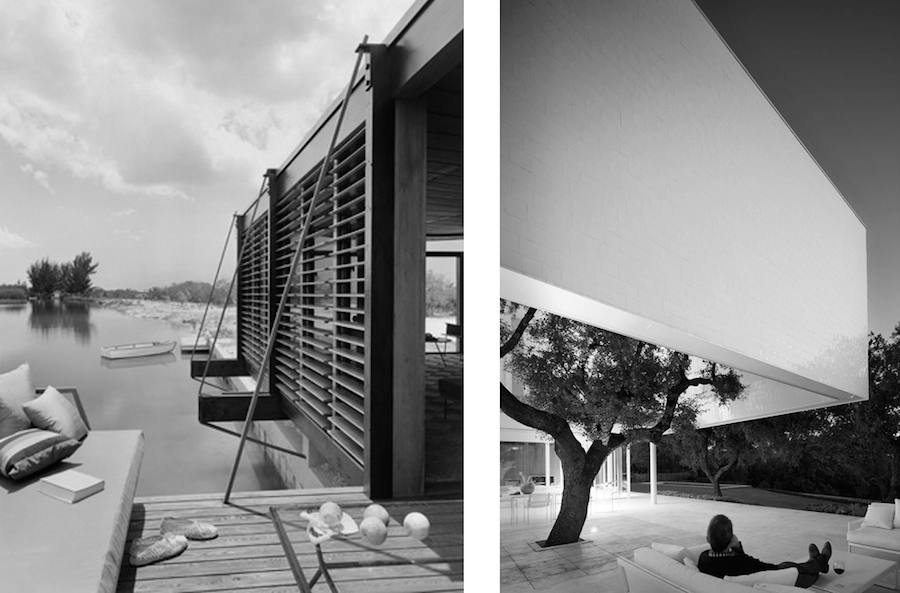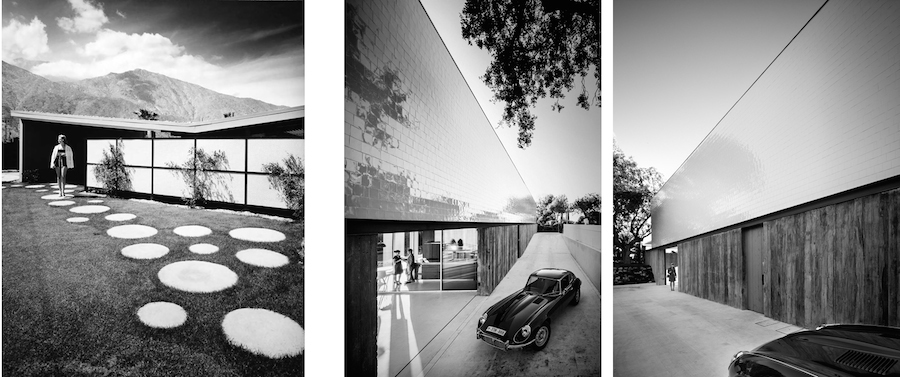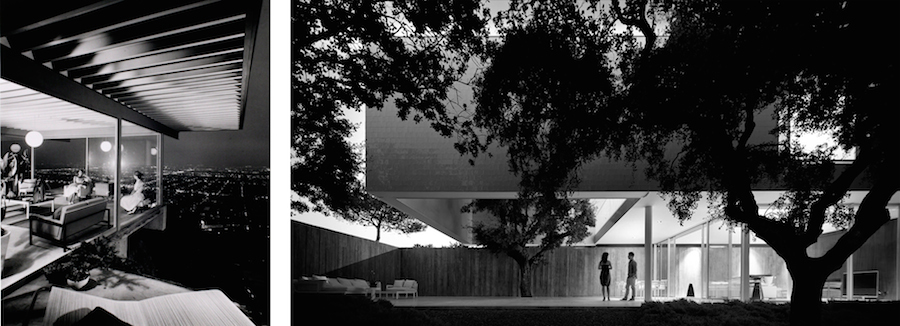 |
| Stoller Casa Cocoon, Florida 1950's / Montse Zamorano, Casa AriasMiguez, Madrid 2013. |
“It’s becoming increasingly unfeasible to reflect on our experience based on the distinction between images and things, copies and originals.”
― Susan Sontag, On Photography
Much of our generation is aware of the great landmarks in modern American architecture from the mid-20th century, not necessarily from having visited them personally, but from having seen the iconic images of photographers such as Ezra Stoller or Julius Shulman.
 |
| Stoller Casa Cohen, Florida 1950 / Montse Zamorano, Casa AriasMiguez, Madrid 2013. |
The economicy prosperity and the collective optimism of the people witnessed in the post-war years in the United States made the one-family household a social experiment, whose key features seemed to be total devotion and a perfect, infinite future in sight. Domestic life suddenly became a kind of day-to-day art-form, effciently manufactured and marketed, almost a national therapy to ease the trauma left from the war not long before.
During this period of industrial growth, both Stoller and Shulman produced some of the most relevant images of modern domestic architecture in decades, as well as creating a visual legacy that would transcend the purely practical needs of their commissioned work to become what we see today as a representation of the very symbolism of the period.
 |
| Shulman Casa Twin-Palms Palm Springs California / Montse Zamorano, Casa AriasMiguez, Madrid 2013. |
After having studied Architecture in Madrid and Chicago, and having written her pre-doctoral thesis on a comparative study of the work of the two great American photographers Ezra Stoller and Julius Shulman, photographer Montse Zamorano (born in Madrid in 1985) has channelled her love of architecture by photographing the work of high-calibre architecture studios such as Foster & Partners, Álvaro Siza and even great masters in the field such as Le Corbusier or Louis Kahn.
Following on from her investigative work of the two great American photographers of the 20th century, Zamorano has begun a new photography project which aims to seek out the roots of the visual aesthetic of the time, a period in modern American architecture that seemed to portray not only contemporary architecture itself, but also a vision for a more human, and humanist, way of life.
 |
| Stoller Casa Deering, Florida 1958 / Montse Zamorano, Casa AriasMiguez, Madrid 2013. |
As a foundation for her project, Zamorano is investigating a one-family household initiative in the “El Bosque” residential area in suburban Madrid and, in partnership with the initiative’s creators — the American architecture studio Buildworks — Zamorano is defining the outline of a new approach towards accurately portraying contemporary society in terms of Spanish domestic architecture.
Starting from the idea that architecture is a spatial experience, Zamorano’s illustrations of this kind of household embody a rich and eloquent visual framework, in which the constitutive parts integrate with one another in a way that transcends the simplicity of the architectural shapes. Like the American photographers, Zamorano depicts both space and its depth, often through the use of diffuse or fragmented elements in the foreground, such as the shadow of a parked vehicle, the branch of an oak tree, or a merry glass of wine. Her photographs clearly show an appreciation for the purity of architectural structure, as well as expressing a seeming preference for the more human aspects of their use — pure images, without drama or desire to intrude.
 |
| Stoller Tienda en Cambridge, Boston 1969 / Montse Zamorano, Casa AriasMiguez, Madrid 2013. |
There is a lack of pretense and artificial mise-en-scène in the images — what we do see in them is a sense of perseverance and perfectionism. Zamorano presents an everyday scene within an architectural framework, transmitting the fluidity between the exterior and the interior, the lines and details in the execution, the striped board panels of the reinforced concrete, the brightness of the ceramic coating, the pathos of an autumn sky, the ubiquity of vegetation that belongs to the site since generations past and is respected by the architectural work.
 |
| Shulman Casa Koenig, Los Angeles 1960 / Montse Zamorano, Casa AriasMiguez, Madrid 2013. |
The use of black and white in these photographs as a documentary technique is a stylistic inheritance from Stoller and Shulman, bringing to the photography a great deal of abstraction. By omitting colour, Zamorano depicts modern architecture without theatricality nor distractions from its pure composition, thus adding to the functionality of the image an aura of hipnotic beauty, timeless and eternal.
For more information on the photographer: www.montsezamorano.com




